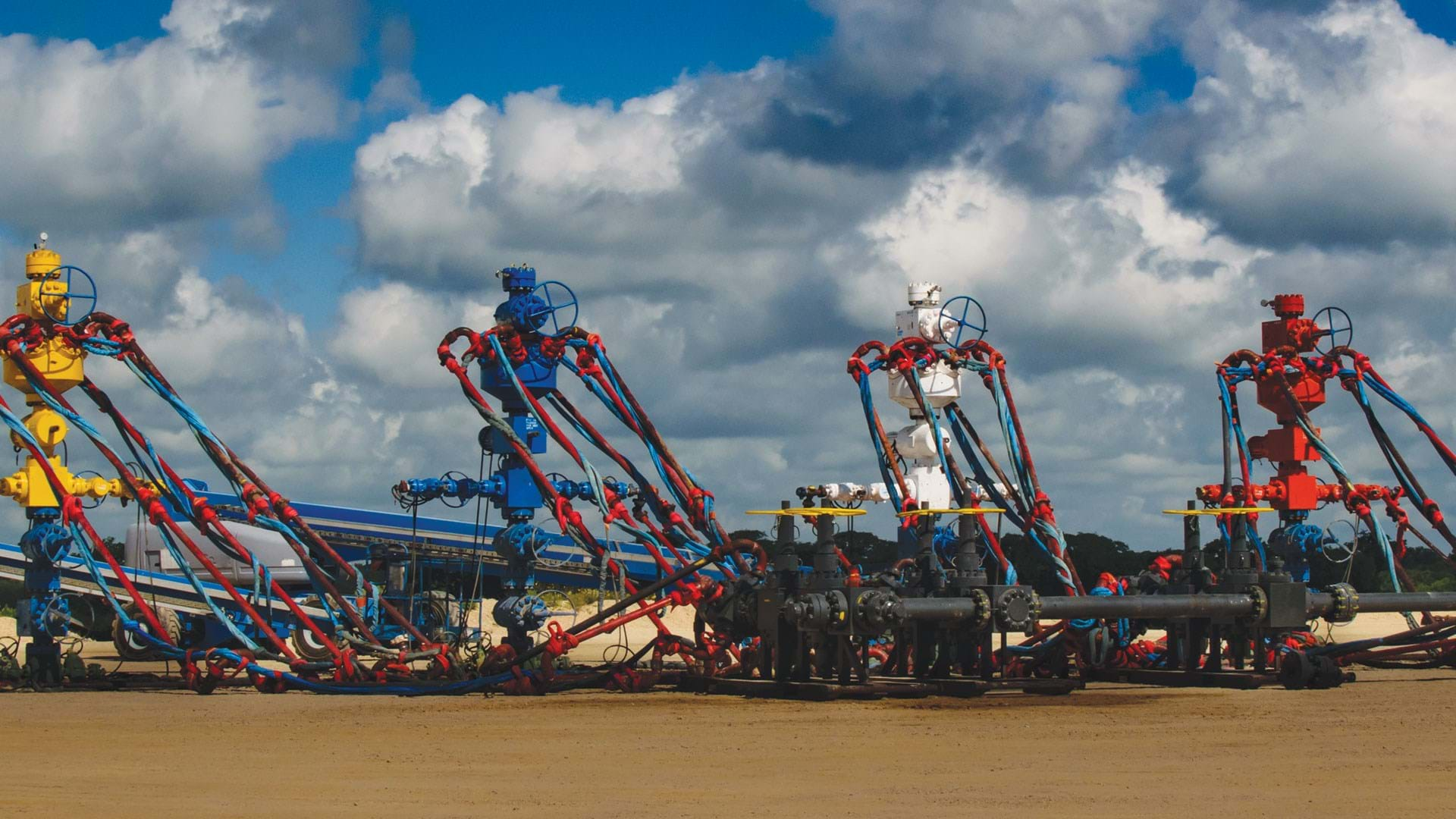ExxonMobil gambles US$60bn on shale oil buyout

In the face of climate warnings, CEO Darren Woods bulks up on fossil fuels
EXXONMOBIL has placed a US$60bn bet on US shale oil with the purchase of Pioneer Natural Resources.
The deal is the largest by the US major since Exxon agreed a US$75bn merger with Mobil in 1999 and gambles on demand for oil and gas remaining robust despite warnings from the International Energy Agency that new oil production must be halted to meet international climate targets.
ExxonMobil said the deal for Pioneer, which produces oil and gas through fracking operations spread across the Permian Basin in West Texas, will double the oil major’s production to 1.3m barrels of oil equivalent per day and estimates that by 2027 it can increase production to 2m per day.
While ExxonMobil’s peers, including BP and Shell, have outlined plans to reduce oil production (though they have since slowed their pace of change), company CEO Darren Woods remains committed to oil growth. The company noted in a recent global energy analysis that while oil demand will decline significantly for personal transportation it expects it will remain essential for shipping, trucking, and industrial feedstocks. It says investment in new production is required to offset declining output from existing fields to meet 85m bbl/d of oil demand in 2050, the same as it was in 2010.
“One of the things people miss when they’re advocating to reduce the amount of oil and gas the world uses is they’re focused on advanced or developed economies. There’s tremendous growth happening around the world where the standards of living are a lot lower than what all of us are used to,” Woods said in an interview earlier this year with CNBC.
Environmental reasoning
In announcing the deal, ExxonMobil sought to play up the environmental benefits, saying it will shave 15 years off Pioneer’s target to reduce operational emissions to net zero by 2050.
It also pledged to apply technologies to monitor, measure, and address fugitive methane emissions from operations and increase the amount of water recycled during the fracking – or hydraulic fracturing – which relies on pumping water mixed with chemicals into oil- and gas-bearing rocks to split them apart and free the hydrocarbons trapped inside.
Woods said: “As long as the world needs oil and gas, we’ll all be focused on making sure that they have the most efficient, effective and responsible operator making and producing oil and gas, and doing it with the lowest carbon intensity,” reports The FT.
On the technology front, it says investment developing more efficient fracking technologies will pay off as it enables the company to drill longer wells, up to four miles in length, through adjoining fields which will result in fewer wells and drilling sites. It also expects to enhance field digitalisation and automation to increase production throughput and reduce cost.
Alongside his bullishness on continued oil demand, Woods has said ExxonMobil should continue to focus on the core strengths that it has developed over the last 140 years: transforming hydrogen and carbon molecules.
Speaking to McKinsey in September, Woods said: “We’re focused on carbon capture and storage (CCS), hydrogen production, and biofuels, which will be needed solutions and part of the equation going forward. Our job in that space is to leverage our capabilities, continue to evolve that technology, drive down those costs, and then build up those businesses at scale.”
ExxonMobil has plans to invest US$17bn in these “lower-emission initiatives” through to 2027.
In July, it announced a US$4.9bn deal for CCS developer Denbury, which included the largest CO2 pipeline network in the US that the company said it would use to offer CCS services to a range of hard-to-decarbonise industries.
The deals follow a windfall in oil profits driven by elevated crude prices pushed up by Russia’s invasion of Ukraine. Analysts have predicted that the purchase of Pioneer could trigger further consolidation in the Permian, which is responsible for more than 40% of the US’ 13m bbl/d oil output. Expectations are that the deal may pile pressure on Chevron to dip into its cash reserves in order to compete.
This article is adapted from an earlier online version.
Recent Editions
Catch up on the latest news, views and jobs from The Chemical Engineer. Below are the four latest issues. View a wider selection of the archive from within the Magazine section of this site.




